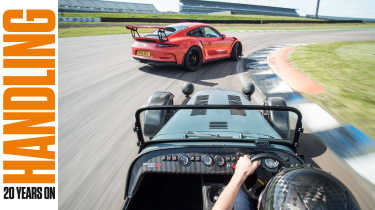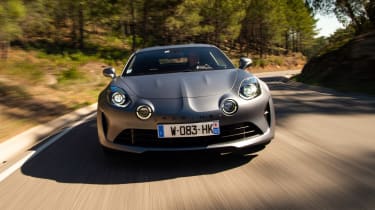Ask the experts: what makes a great handling car? Thierry Landreau
Thierry Landreau - Engineering director, Renault Sport Cars and Alpine
What’s the most important feature for a driver’s car? The chassis! For active safety and driving pleasure.
What’s the best-handling car you’ve driven?
Nissan GT-R – impressive!
What’s the best-handling current production car you’ve driven?
A110. And Mégane RS in the world of five-seat hot hatches.
What car do you wish you had set up?
Clio 2 RS – the pioneer of the RS generation.
Can a bad-handling car be fun?
No. Driving pleasure is derived from a vehicle with predictable and safe behaviour.
If you had a maximum of £25,000 to spend, what car would you buy?
I would complete my current collection [Mégane 4 RS and new Alpine A110] with a Clio 4 RS Trophy.
What car maker do you respect, and why?
Lotus, for daring to push simplification and lightening to the extreme. And also Porsche, for the permanent search for performance optimisation, generation after generation, without deviating from the original spirit.
What will be the next big thing in chassis development?
The overall control of the chassis, through VMC [Vehicle Motion Control] technologies, which will technically make it possible to reduce even further the conventional chassis tuning compromises. The use of four-wheel steering, as on some super sports cars as well as the new Mégane RS, shows how the introduction of a new technology allows you to review the entire development with new areas for development and additional performance. However, even with a perfect chassis control system, the resulting performance will be dependent on the grip and stiffness of the tyres, and the driving pleasure will remain strongly tied to the steering feel; the tyres and the steering will remain critical to driver engagement.
Has EPAS made good handling easier to achieve?
EPAS gives a lot of potential scope to the development, but the calibration is not easier; you have to manage many parameters. It is the intelligence of the engineer that makes the resulting performance.
Driver modes – useful or unnecessary?
Useful! They allow the vehicle to be adapted to the desired use according to the needs, desires and constraints of the individual driver. The only requirement is that each driving mode be consistent between the various services – steering, suspension, braking, engine and gearbox – and that the modes are clear and easy to use.
Is the Nürburgring useful to car set-up?
Yes, but as a synthesis exercise and for the verification of performance, not for the simpler and more analytical development steps.
How do you make an all-electric car engaging for enthusiast drivers?
The enthusiasm for very linear acceleration is a unique thing. It is also necessary to ‘erase’ mass and inertia with appropriate technologies, for example torque-vectoring, and accept the pleasure of silence or a different sound.






